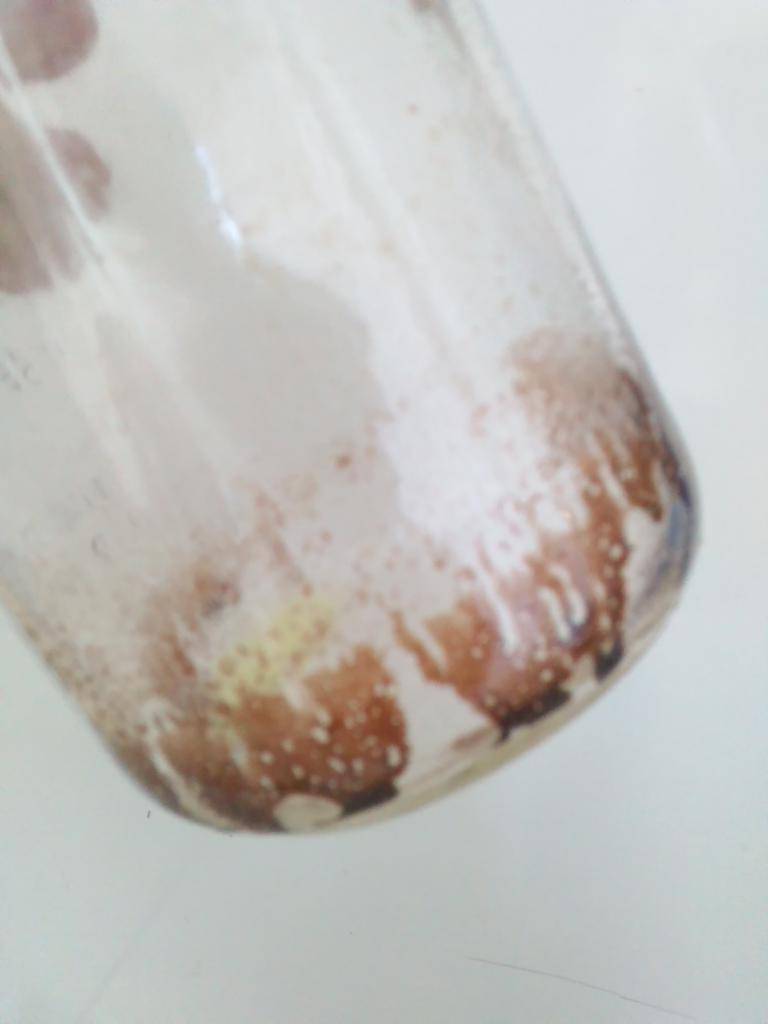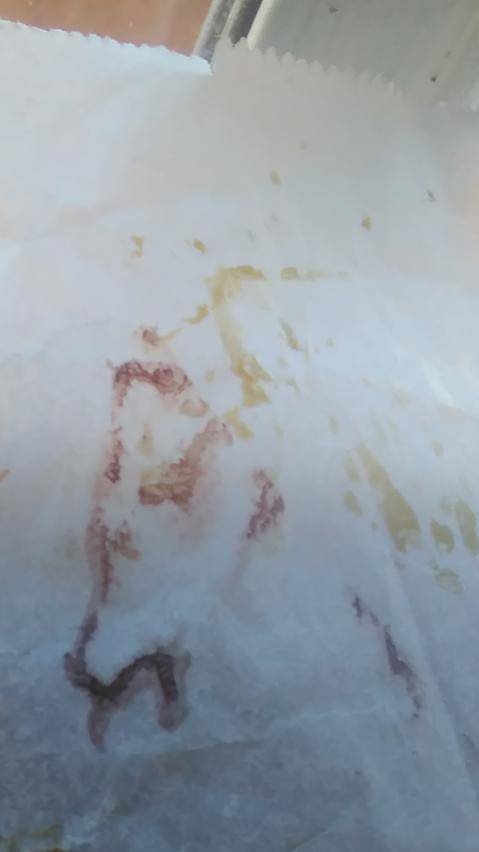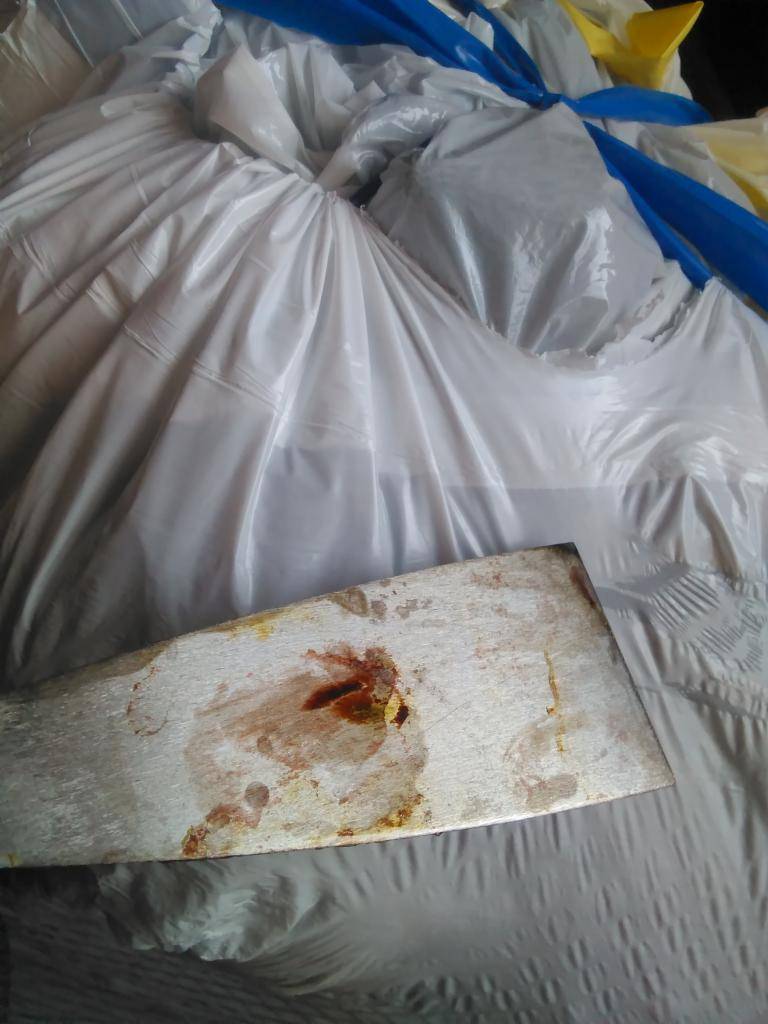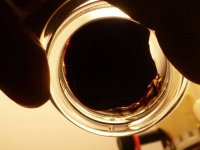Hi guys, so a couple weeks ago, I noticed something strange happen, after having dissolved some extracts in acetone, and evaporating it in natural atmosphere, as opposed to under vacuum. I saw the same thing happen with two completely different sources of material (Indoor nugs AND outdoor trim), and two different sources of butane were used (one sourced from cans, the other tank claimed 99.5% but was never distilled).
After almost all of the acetone had evaporated - to where the extract doesn't flow across the dish when tilted, but still low enough in viscosity to scrape with ease - I scraped the extract onto PTFE paper in a thin slab to be vacuum purged. Still everything was normal, until about 12 hours later. I noticed what could be a color change, or it could be simply compounds dropping out of the saturated solution. The bit of residue left on the blade after drying separated into two distinct colors. Heavy maroon, and bright piss yellow. I thought it was oxidation/sunlight causing color change, but I did the same thing in complete darkness, and about 12 hours later, the maroon emerged again!!
The blade led me to believe it was spots of oxidation/degradation of some sort, but the pyrex dish still had lots of THC residue around the edges. And really looked to me like two layers had separated out, as I could very visibly see maroon "downhill" from the golden THC (which has now been smoked - very smooth with no strange residues).
My thoughts were originally to look at the solvent used, but considering acetone is aprotic, it wouldn't really affect the pH of any compounds would it? Ethanol might have more of an affinity for doing so, as it does have an acidic hydrogen available for donation. In acetone, the oxygen and it's free electrons seem like a great place for hydrogen bonding to occur (probably hydrogens from THC), so I can see that the acetone would want to stay with the THC.
Looking back on my THCa experiments, what I previously thought to be anthocyanins (and it still could be) could be whatever I have in front of me here. Basically something turned exactly this color of maroon, and it formed a separable emulsion between the alkaline aqueous solution and the nonpolar solvent (picture & link just below). What confused me at that time was why the color stopped at maroon-purple which would indicate a pH of ~6-7 from anthocyanin response, when I surely brought the aqueous phase up to 12-13.

https://www.icmag.com/ic/showpost.php?p=7717690&postcount=156
I am thinking that the maroon may be some sort of carotene. Having such a long hydrocarbon chain and it's heavier molecular weight would give it reason to perhaps crash out of a supersaturated solution.
Any further opinions? Thanks for any insights!
I think I've seen this happen before, and chalked it up to using standard mason jar lids, as the acetone vapors alone are enough to eat the red rubber seal. No jar lids here...



After almost all of the acetone had evaporated - to where the extract doesn't flow across the dish when tilted, but still low enough in viscosity to scrape with ease - I scraped the extract onto PTFE paper in a thin slab to be vacuum purged. Still everything was normal, until about 12 hours later. I noticed what could be a color change, or it could be simply compounds dropping out of the saturated solution. The bit of residue left on the blade after drying separated into two distinct colors. Heavy maroon, and bright piss yellow. I thought it was oxidation/sunlight causing color change, but I did the same thing in complete darkness, and about 12 hours later, the maroon emerged again!!
The blade led me to believe it was spots of oxidation/degradation of some sort, but the pyrex dish still had lots of THC residue around the edges. And really looked to me like two layers had separated out, as I could very visibly see maroon "downhill" from the golden THC (which has now been smoked - very smooth with no strange residues).
My thoughts were originally to look at the solvent used, but considering acetone is aprotic, it wouldn't really affect the pH of any compounds would it? Ethanol might have more of an affinity for doing so, as it does have an acidic hydrogen available for donation. In acetone, the oxygen and it's free electrons seem like a great place for hydrogen bonding to occur (probably hydrogens from THC), so I can see that the acetone would want to stay with the THC.
Looking back on my THCa experiments, what I previously thought to be anthocyanins (and it still could be) could be whatever I have in front of me here. Basically something turned exactly this color of maroon, and it formed a separable emulsion between the alkaline aqueous solution and the nonpolar solvent (picture & link just below). What confused me at that time was why the color stopped at maroon-purple which would indicate a pH of ~6-7 from anthocyanin response, when I surely brought the aqueous phase up to 12-13.
https://www.icmag.com/ic/showpost.php?p=7717690&postcount=156
I am thinking that the maroon may be some sort of carotene. Having such a long hydrocarbon chain and it's heavier molecular weight would give it reason to perhaps crash out of a supersaturated solution.
Any further opinions? Thanks for any insights!
I think I've seen this happen before, and chalked it up to using standard mason jar lids, as the acetone vapors alone are enough to eat the red rubber seal. No jar lids here...
Last edited:





